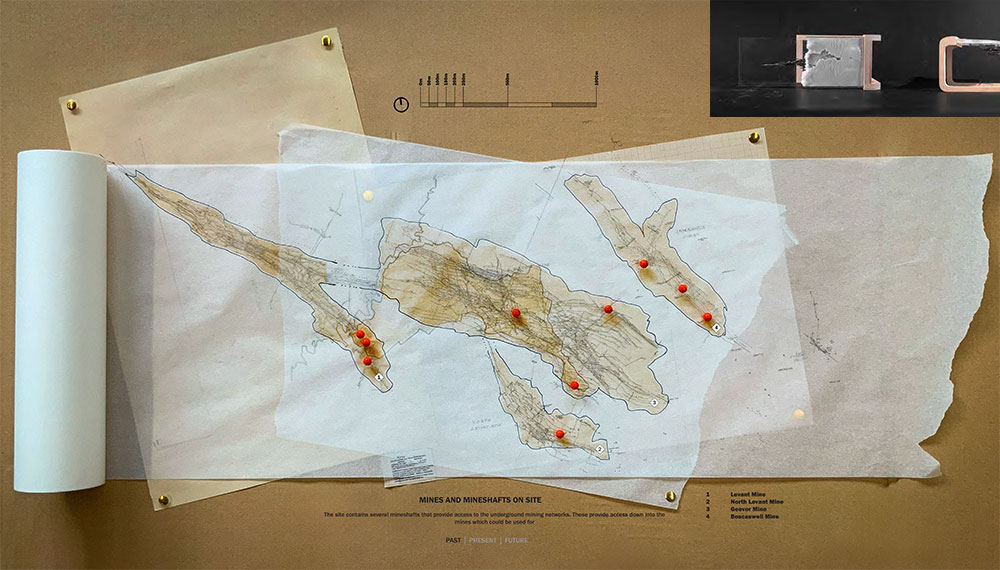The Non Standard Habitats Atelier explores alternative ways of living through speculative research. Our focus is on designing for the future by addressing current overlooked needs, envisioning new scenarios that demand innovative programmatic agendas, challenging conventional building typologies and standards, and creating visionary, specialised environments.
The Atelier's focus this year was to question our responsibilities as designers and citizens regarding how lithium mining will shape our territories. Our BA3 students investigated, analysed, and developed speculative, progressive visions for the future of lithium mining communities.
Lithium is currently the key ingredient in batteries, a substance in every phone or electric car. As the world shifts towards renewable energy sources to reduce carbon emissions, the ability to store excess energy becomes crucial. The high demand for small, powerful batteries has made areas rich in lithium deposits some of the most desirable places on the planet.
The establishment of a lithium mine often sparks controversy, given that large lithium deposits are frequently situated in areas of significant natural, environmental, social, and heritage value. Critical impacts of lithium mining include the disruption of wildlife habitats and the economic activities of local communities, depletion of aquifers and industrialisation of the natural landscape.
The question is: can we find a way for a just energy transition that gives agency to local communities? A prominent contemporary discourse centres on the need to revise mining regulations, standards, and policies to safeguard indigenous communities and invaluable natural resources.
Non Standard Habitats Atelier aimed to contribute to this debate by proposing ideas for a sustainable, self-sufficient, lithium mining community.
We proposed that all NSH students worked in the area surrounding Geevor Tin Mine, in Cornwall, where there is potential for lithium extraction. The proposed Cornish extractions would make a significant contribution to the UK’s lithium requirement, in preparation for the UK’s plans for future battery manufacturing capacity, which it currently lacks. Students were encouraged to develop future-facing strategies based on their research into the social, environmental, and economic implications of this emerging industry.
Located on the rugged Tin Coast of West Cornwall, the Geevor Tin Mine, featuring dramatic coastal scenery, unique geology, and a maritime climate, exemplifies Cornwall's industrial legacy. The broad range of student visions for future productive communities includes a commitment to protecting, maintaining, and revitalizing these unique landscapes.


